The Ongoing Evolution of the Pocket
Molly Cohen, Fashion Archives Summer Intern 2018
One of the most universally debated topics in fashion is the Woman’s Pocket, or current lack thereof. Over the last three centuries, we have seen women’s pockets evolve dramatically and rapidly. While recently deinstalling a mid 19th century piece from the current exhibit “Divided Voices: Maryland in the Civil War” to allow for a new rotation of gowns to be displayed, I was struck by the prominently placed, deep pockets on the gown. So deep, in fact, I could almost reach my entire forearm inside.
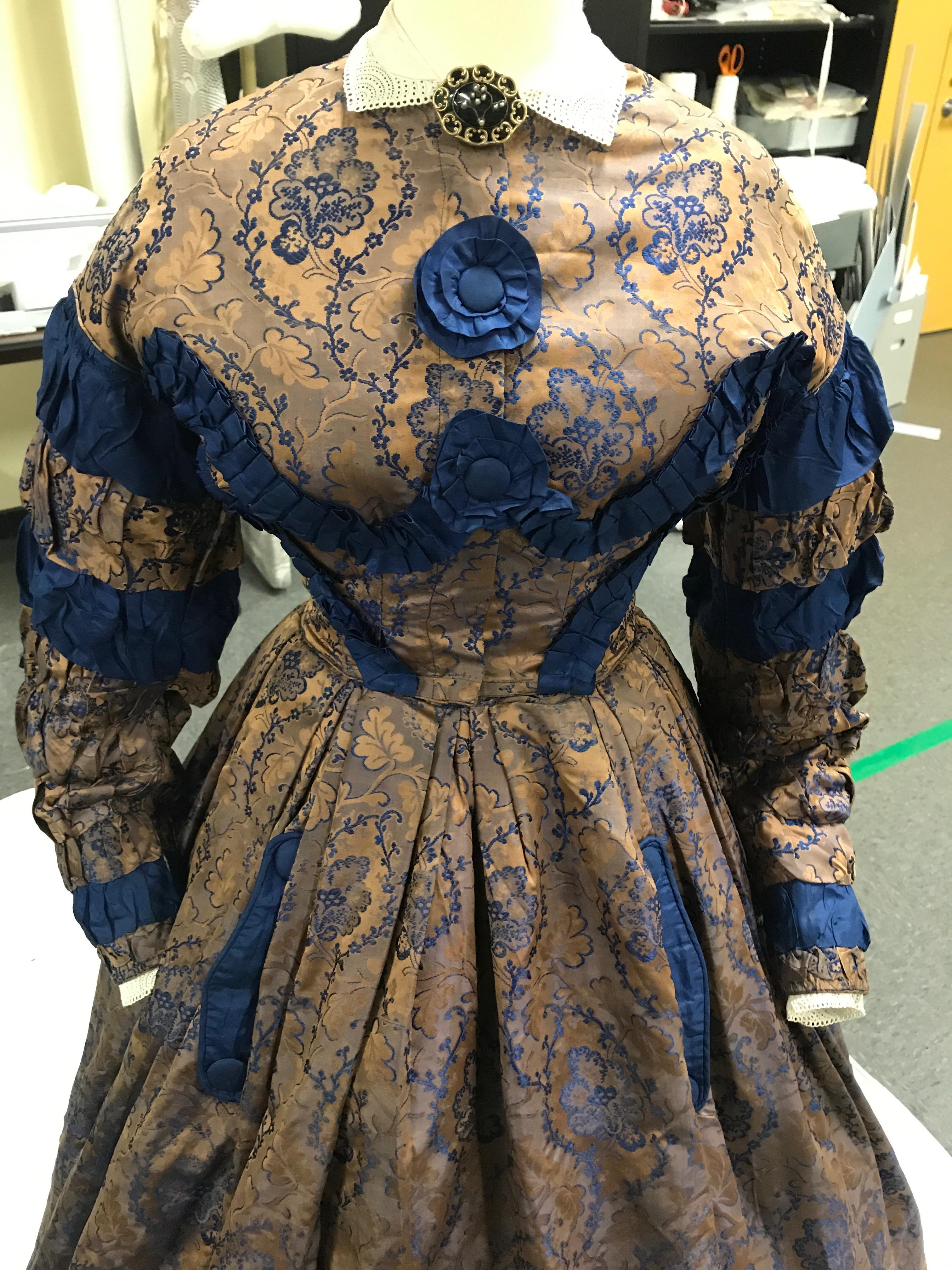
Pockets made their first appearance in women’s fashion in the early 17th century, but as its own detachable garment. It would situate itself under the many layers of fabric women wore, and often secured to a band that tied at the waist. The Victoria & Albert Historical Context website remarks on pockets’ early size and universal necessity, despite “there [being] no mobile phones, car keys or credit cards in the 18th century.” Nevertheless, women kept a wide variety of objects in their pockets.
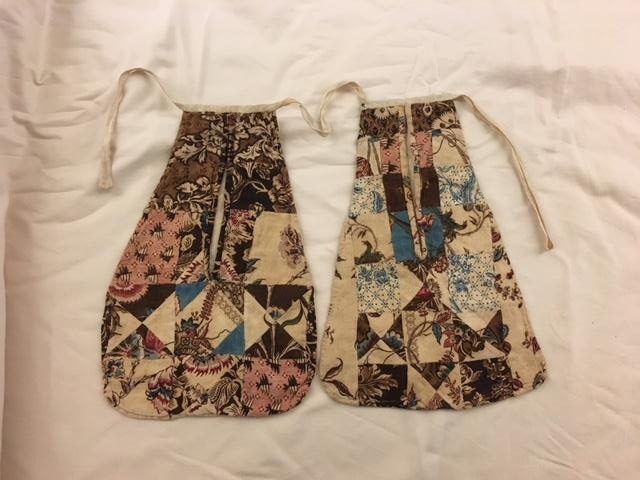
Pockets with patchwork design, Maryland Historical Society, Gift of Dr. William S. Hall
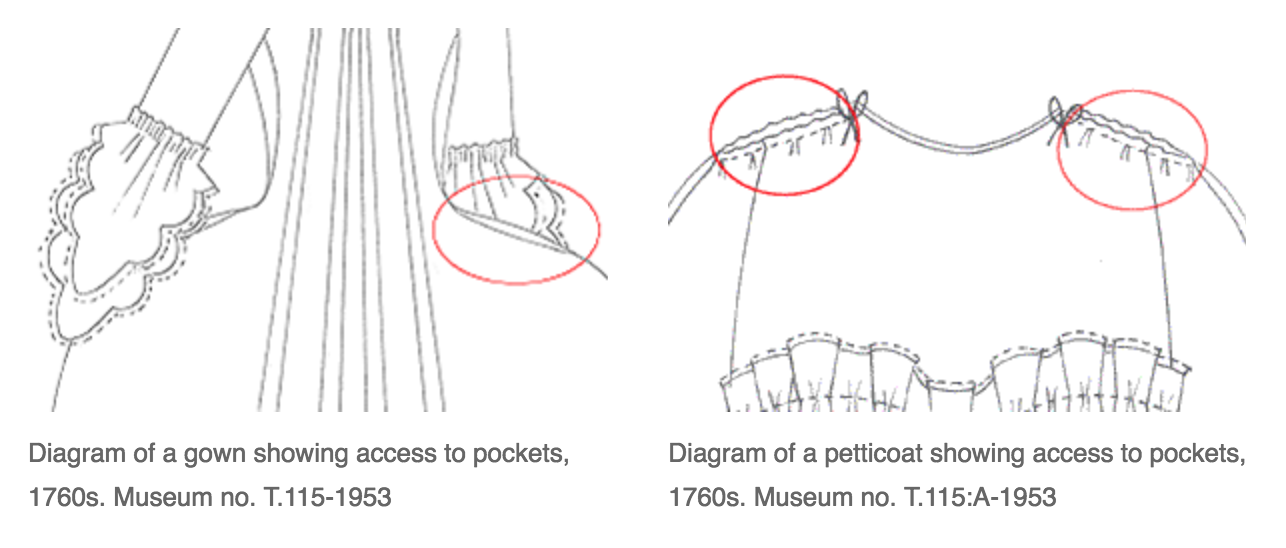
Diagram of a petticoat showing access to pockets, 1760s. Victoria & Albert Museum, T.115-1953, T.115:A-1953
In the days when people often shared bedrooms and household furniture, a pocket was sometimes the only private, safe place for small personal possessions” (“A History of Pockets”, 2013). Why did this clear need for a private and safe space within garments disappear? The detachable pocket leaves the women’s garment altogether when the drastic silhouette change of the late 18th century occurs, as shown below. When full petticoats and wide hoops were no longer in style, the sleeker high-waisted gowns that replaced them did not allow for any form of pocket due to how much it would alter the shape of a gown and the smooth silhouette it created. Instead, a decorative purse, known then as a reticule, came into use for women. We see in this example how fashion is the driving force behind the evolution of pockets and other accessories.
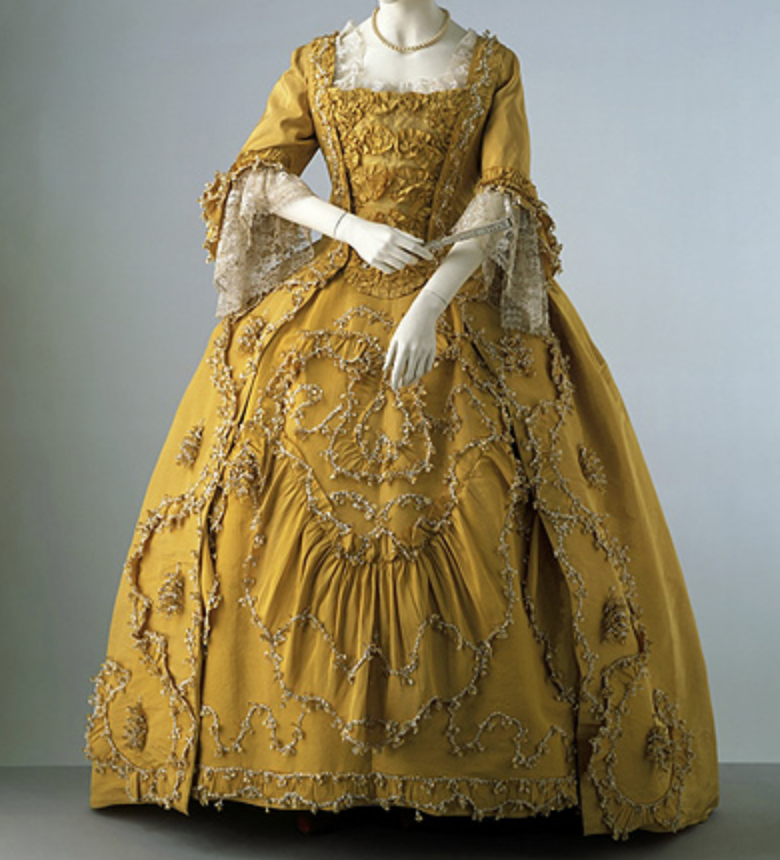
Sack-back gown, Britain, 1760. Museum no. T.77-1959. Courtesy of Victoria and Albert Museum Fashion Collection. |
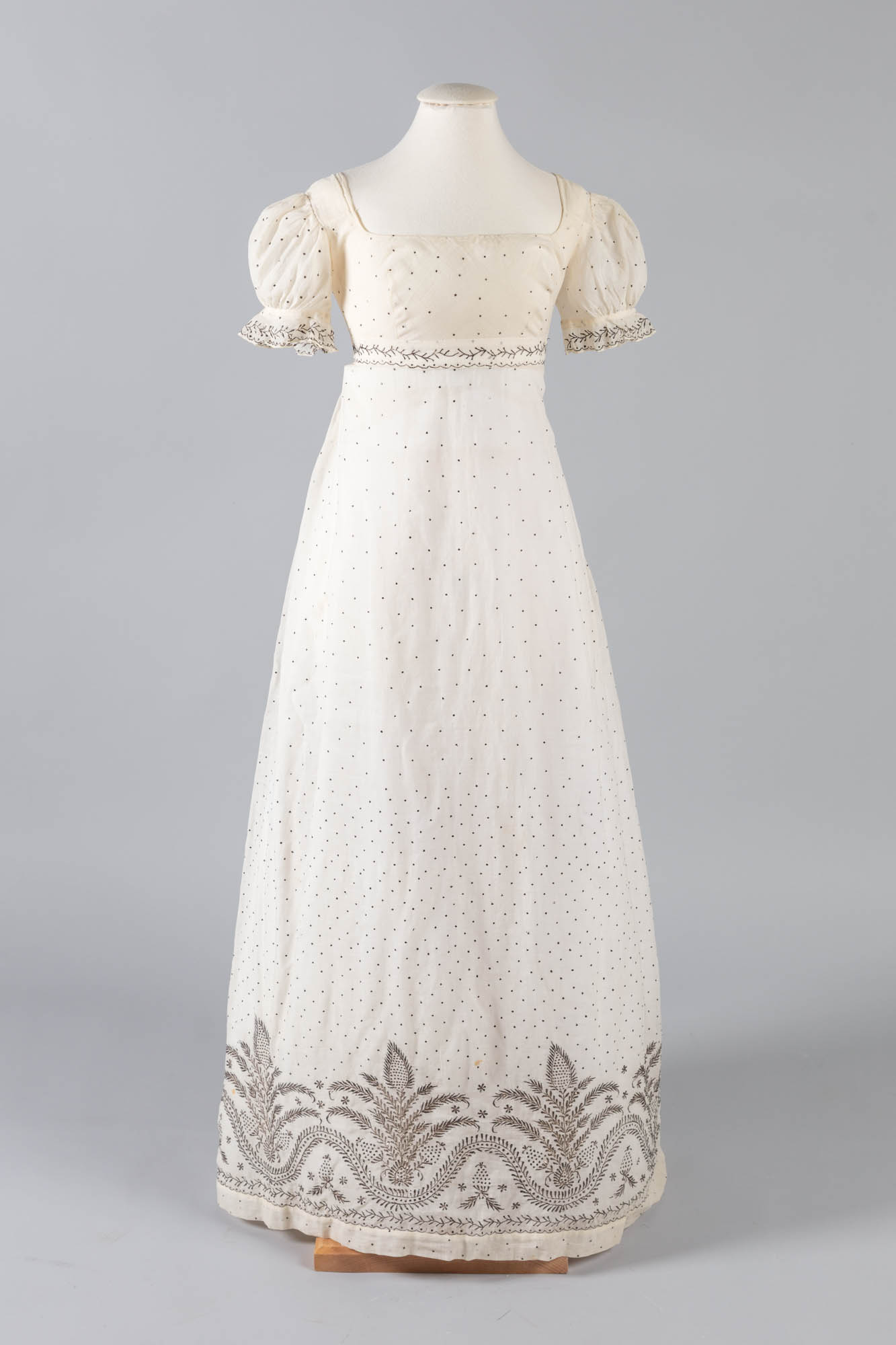 Silver-shot muslin dress, c.1810. Maryland Historical Society, Bequest of J. B. Noel Wyatt, xx.1.53 Silver-shot muslin dress, c.1810. Maryland Historical Society, Bequest of J. B. Noel Wyatt, xx.1.53 |
The V&A explains that pockets reappeared in the mid 19th century first on working class patterns, because the practicality of pockets was simply too apparent to overlook. “Clearly the mid-19th century was a period of transition, with both separate pockets and those sewn into the seams of a dress, in use” (V&A, Wearing Pockets). Pockets continued to be utilized throughout the 19th century, especially for girls and working-class women.
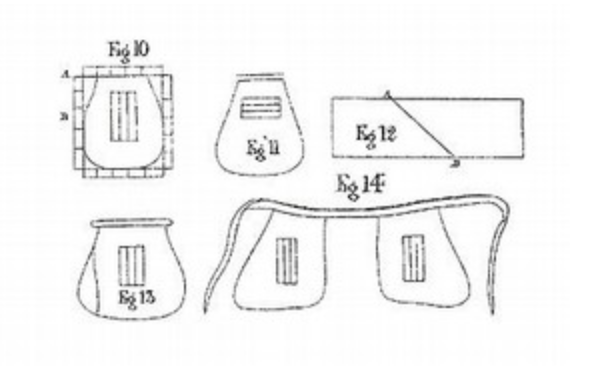
 Amy Schumer, Gina Rodriguez, Jenna Dewan Tatum at the 2016 Golden Globe Awards Red Carpet. Getty Images AP, Courtesy of TODAY.
Amy Schumer, Gina Rodriguez, Jenna Dewan Tatum at the 2016 Golden Globe Awards Red Carpet. Getty Images AP, Courtesy of TODAY.New Call-to-action
References:

